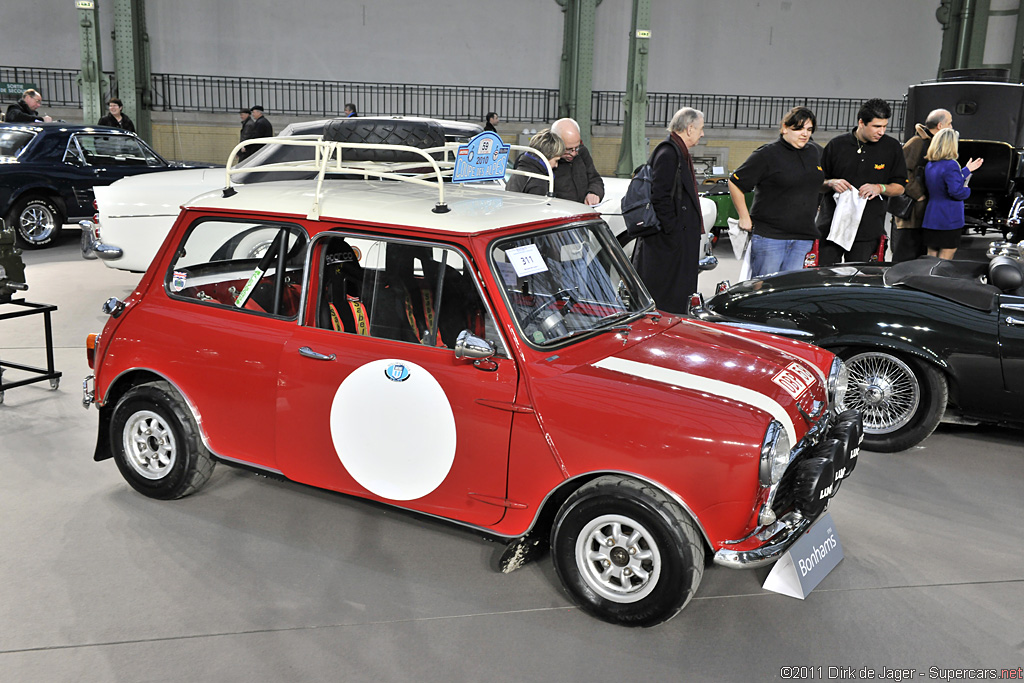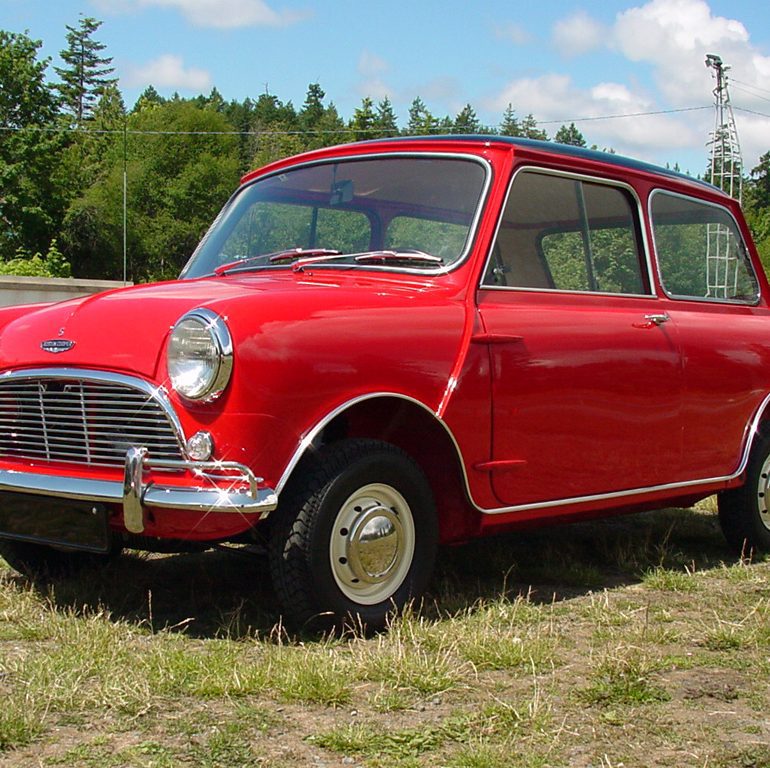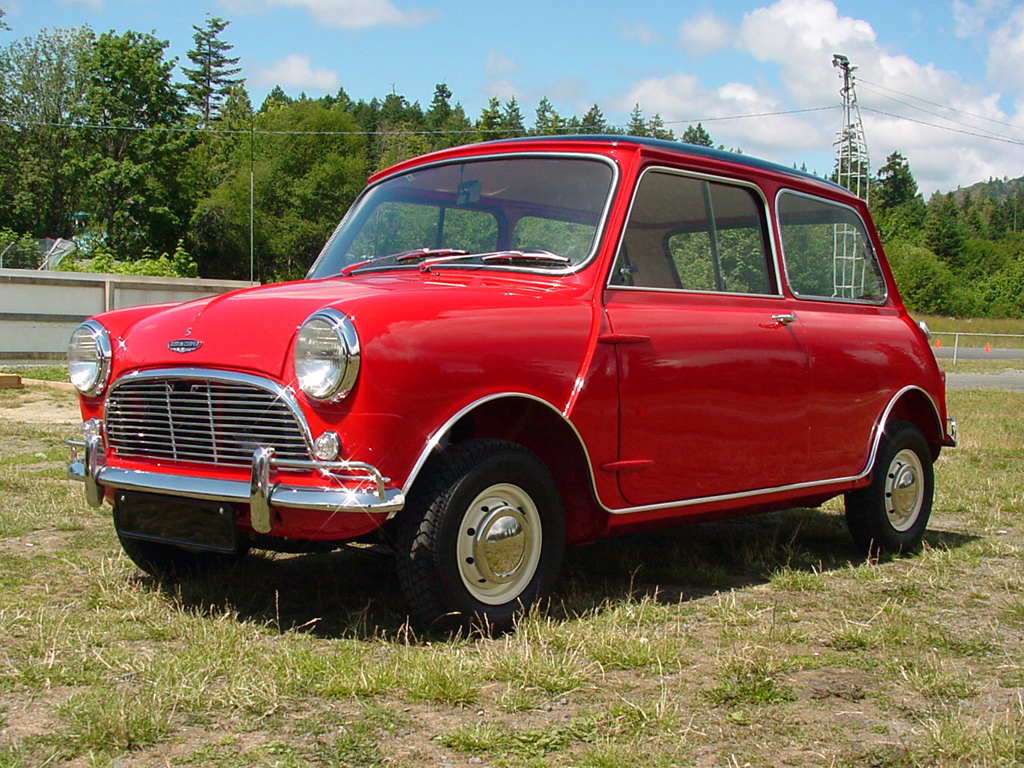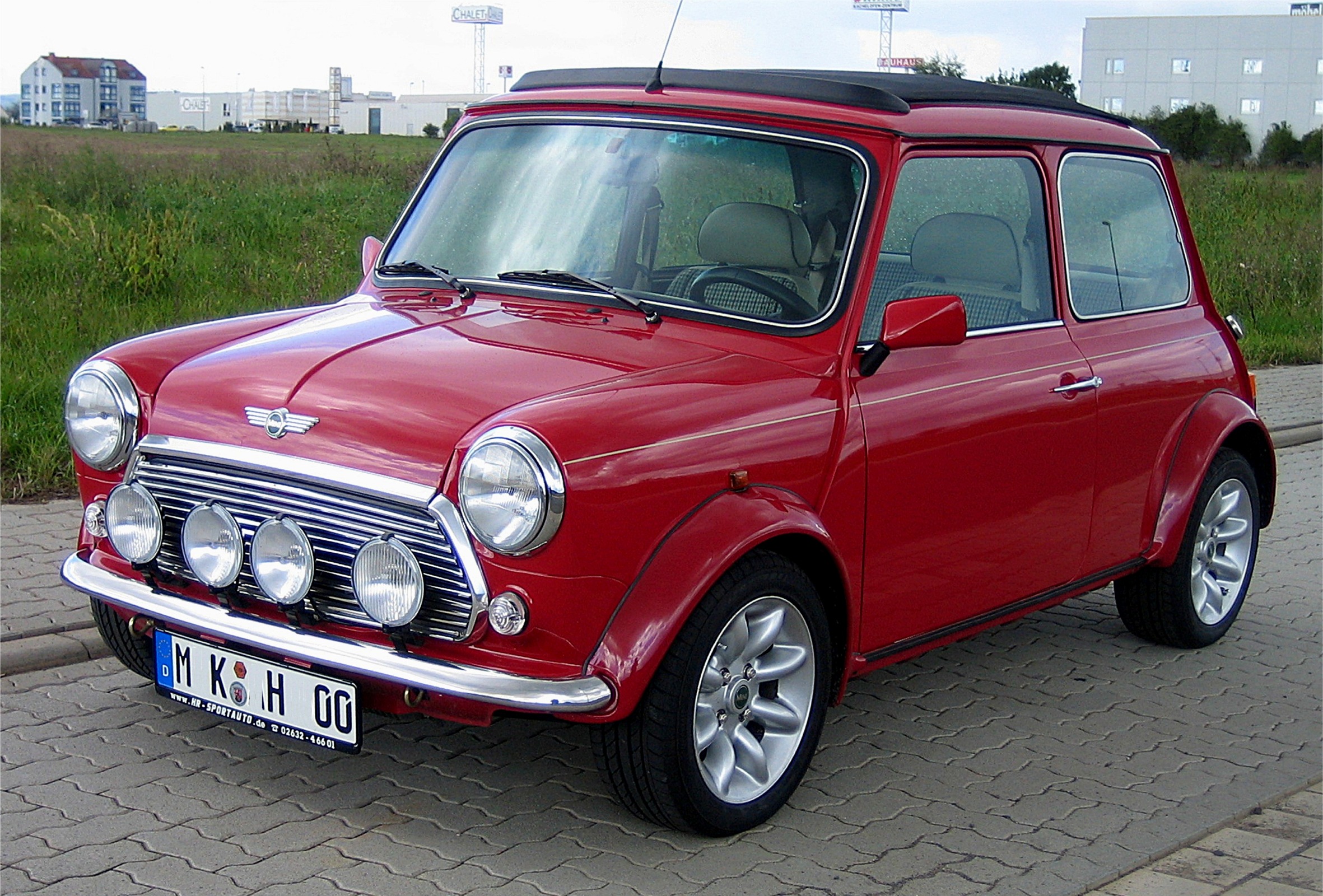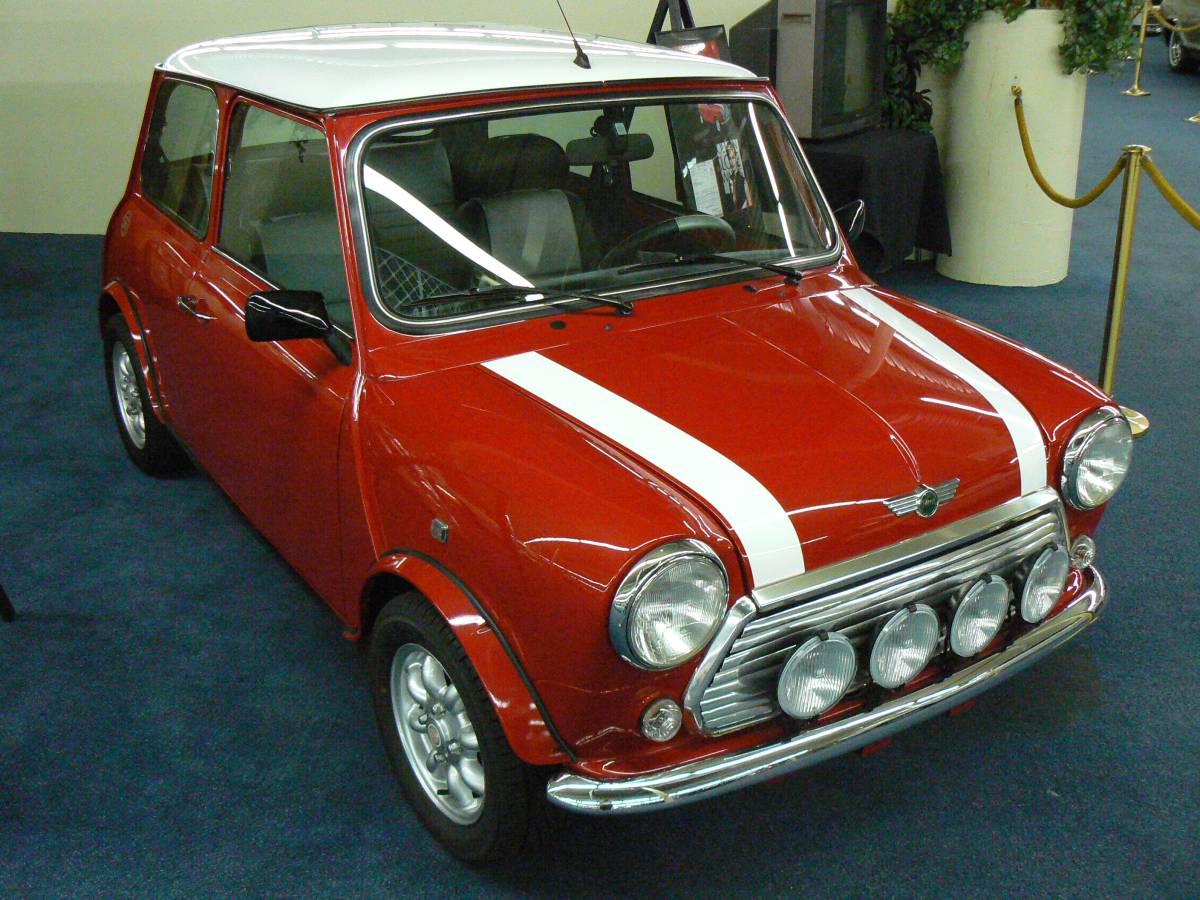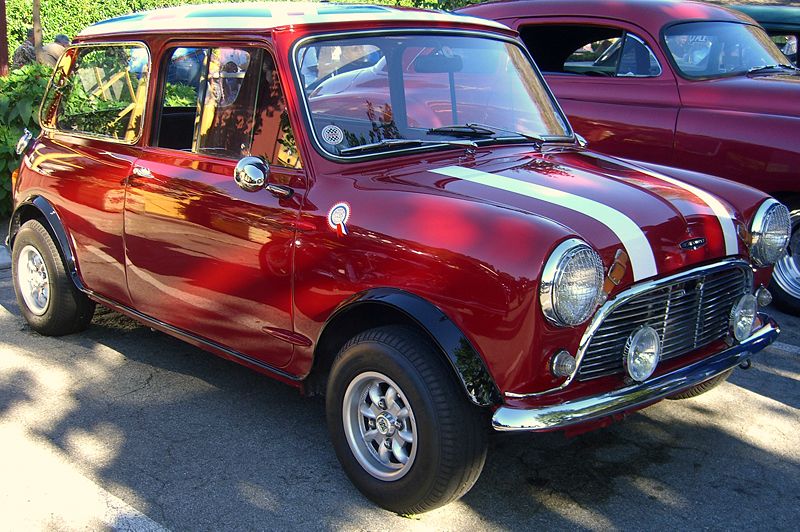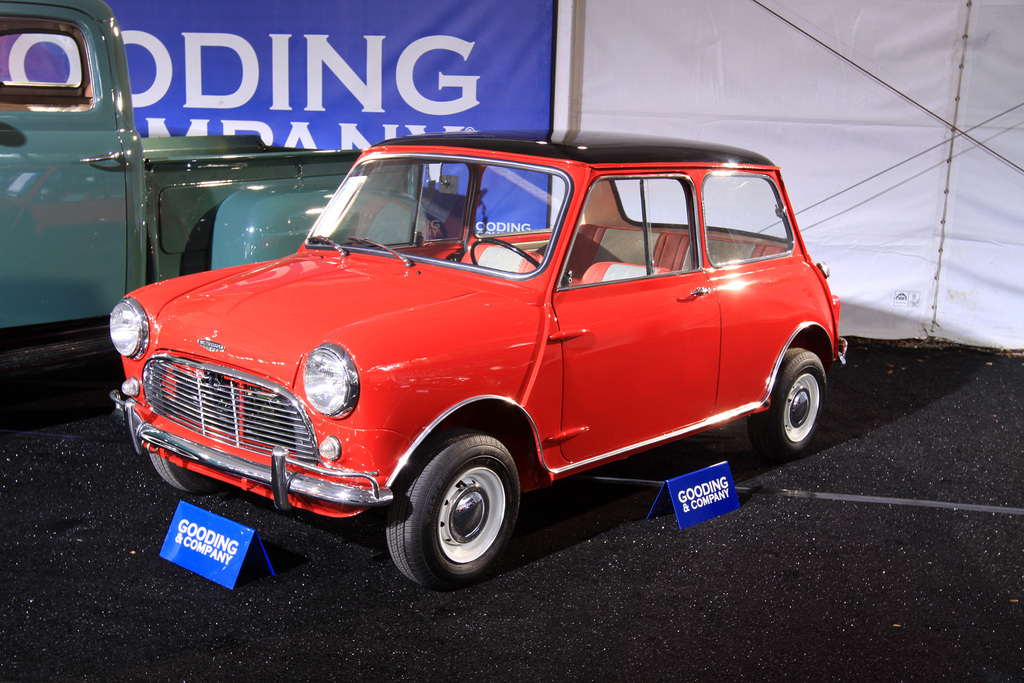1963 Austin Mini Cooper S
BY 1963 the BMC Competition department knew what they wanted to do with the Mini. Their efforts culminated in the 1963 Austin Cooper S and Morris Cooper S. Besides a host of upgrades, the primary difference was a specially cast engine block and cylinder head that was more suitable for racing.
The first Cooper S models used a 1071 cc engine with a special nitrided steel crankshaft. In 1964 a range of displacements was offered including 971 cc and a 1275 cc.
For extended trips and rally racing, a second fuel tank was fitted. Other factory upgrades included larger front disc brakes, a vacuum-assisted brake booster and offset steel wheels which were widened to 4½ inches by 1964.
Despite only having around 75 bhp on tap, the Minis were very successful in Group 2 Rally racing, winning the Monte Carlo Rally outright.
More Details
Originally the brainchild of race car builder John Cooper, the Austin Mini Cooper was designed by Alec Issigonis. Issigonis thought that the Mini should be a “people’s car” rather than a performance machine and the did not like the idea of a souped-up Mini. He persuaded British Motor Corporation to do just that and agreed to a trial run of just 1,000 cars in order to meet the homologation rules of Group 2 rally racing. It was a great decision.
The Mini Cooper was one of Britain’s great sports car legends that became the definitive rally car of the ’60s. Its small size, maneuverability, and front-wheel drive allowed it to dance around bigger, more unwieldy cars to gain victories.
The Mini was a perfect blend of pin-sharp steering and terrific handling balance. The Mini Cooper, a nimble, economical and inexpensive car has a low center of gravity and a wheel at each extreme corner – the perfect credentials for solid handling.
The Mini Cooper, dubbed the “S”, was developed in tandem and released in 1963. The Mini Cooper S earned acclaim with Monte Carlo Rally victories in 1964, 1965 and 1967.
Now we wonder how many MINI Cooper automobiles were sold thanks to the movie, the original “The Italian Job”. We saw Lamborghinis, Alfa Romeos, Jaguars, and Aston Martins being raced in the movie but the real stars were the three Mini Cooper S models used during the gold heist hauling three tons of gold in these tiny cars.
Pictures
Specs & Performance
| tags | group2 |
| submitted by | Richard Owen |
| type | Series Production Car |
| built at | England |
| engine | Inline-4 |
| valvetrain | OHV 2 Valves / Cyl |
| displacement | 1071 cc / 65.4 in³ |
| bore | 70.6 mm / 2.78 in |
| stroke | 68.28 mm / 2.69 in |
| compression | 9.0:1 |
| power | 52.2 kw / 70.0 bhp @ 6200 rpm |
| specific output | 65.36 bhp per litre |
| bhp/weight | 123.46 bhp per tonne |
| torque | 84.06 nm / 62.0 ft lbs @ 4500 rpm |
| redline | 6500 |
| body / frame | Unit Steel |
| driven wheels | Front Engine / FWD |
| front brakes | Solid Discs w/Power Assist |
| rear brakes | Drums w/Power Assist |
| front wheels | F 25.4 x 8.9 cm / 10.0 x 3.5 in |
| rear wheels | R 25.4 x 8.9 cm / 10.0 x 3.5 in |
| steering | Rack & Pinion |
| curb weight | 567 kg / 1250 lbs |
| wheelbase | 2032 mm / 80.0 in |
| front track | 1341 mm / 52.8 in |
| rear track | 1191 mm / 46.9 in |
| length | 3124 mm / 123.0 in |
| width | 1410 mm / 55.5 in |
| height | 1346 mm / 53.0 in |
| transmission | 4-Speed Manual |
| gear ratios | 3.254:1, 1.948:1, 1.378:1, 1.0:1 |
| final drive | 3.7:1 |
| top speed | ~144.8 kph / 90.0 mph |
| 0 – 60 mph | ~13.0 seconds |
| 0 – 1/4 mile | ~19.2 seconds |
Auction Sales History
Auction Source: The Amelia Island Auction by Gooding & Company
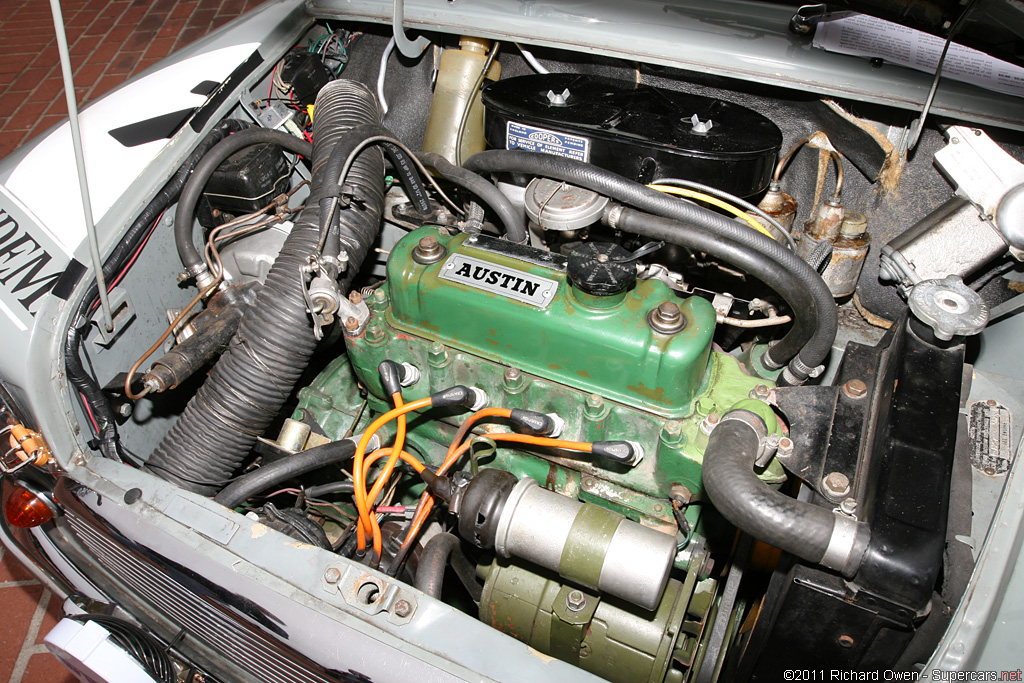
Auction Source: 2011 Monterey Auction by RM
